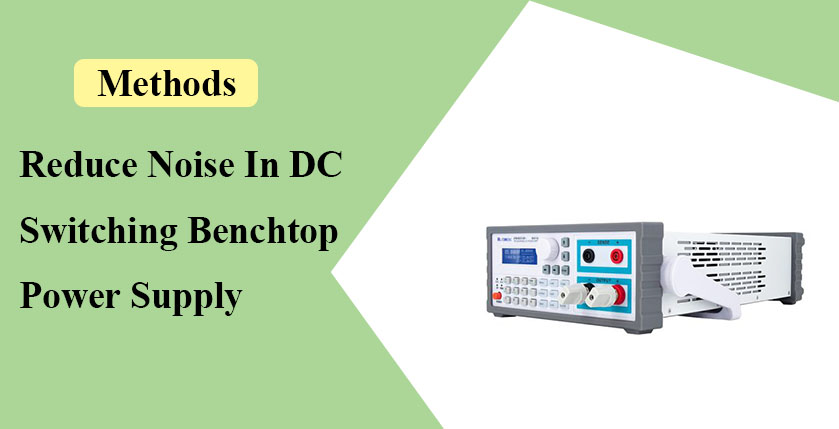Noise is an electrical phenomenon frequently encountered in electronic circuits, particularly within switching bench power supplies. This type of noise arises from the rapid switching of electrical currents, which can generate electromagnetic interference and disrupt the normal operation of electronic devices.
If left unaddressed, this noise can significantly degrade DC bench power supply performance in various applications, including sensitive medical, tests and measurements. Effective noise reduction strategies are essential to mitigate these impacts. So, what causes the noise in these DC power supplies, and how can it be resolved?

Reasons For Noise In Switching Bench DC Power Supply
Internal Cause
- Noise generated during the operation of the switched mode power supply. It can instantaneously change current, resistance, and other factors, leading to internal fluctuations. These changes, often rapid, can easily generate noise, affecting the surrounding environment.
- Noise from wear and tear of internal components in the switching bench top power supply. Due to the frequent operation required by the power supply, the internal components experience wear and tear, which directly results in noise production.
External Cause
- Natural factors can impact noise levels. Current has strong physical properties and is susceptible to external natural influences during operation. For example, during thunderstorms, switching power supplies are prone to generating significant noise.
- Noise caused by issues affecting the circuit. Switch mode power supplies control the entire circuit system, which can react under certain conditions and impact the power supply. In practice, noise from the switching power supply is often caused by problems within the circuit system.
How To Minimize Switch Mode DC Power Supply Noise
Adding Filter
Install a common mode noise filter at the DC switching power supply’s output. By placing ferrite beads on the output wires to form a conjugate loop and adding high-frequency capacitors, you can effectively suppress common mode noise. Increasing the output filtering inductors and capacitors can suppress differential mode noise. Employing multiple capacitors in parallel offers a better suppression effect than using a single capacitor.
Grounding
The purpose of grounding the switch mode DC power supply is primarily for safety considerations. Additionally, grounding the power supply can effectively deal with electromagnetic compatibility issues. A well-designed grounding system plays a crucial role in reducing electromagnetic interference.
Other Methods
In addition to the methods mentioned above for effectively suppressing noise in switch mode bench power supply, noise impact can also be reduced by adjusting the placement and orientation of components, as well as the overall layout of the system circuitry.
Conclusion
To reduce noise in a DC switching benchtop power supply, it’s essential to enhance grounding techniques, incorporate effective filters, and optimize the layout. Recognizing the need for reliable, low-noise operation in sensitive applications, we, as a professional DC power supply manufacturer, offer a range of switching benchtop power supplies designed to meet these criteria. If you’re looking to learn more about our DC power supplies, just visit our website.
